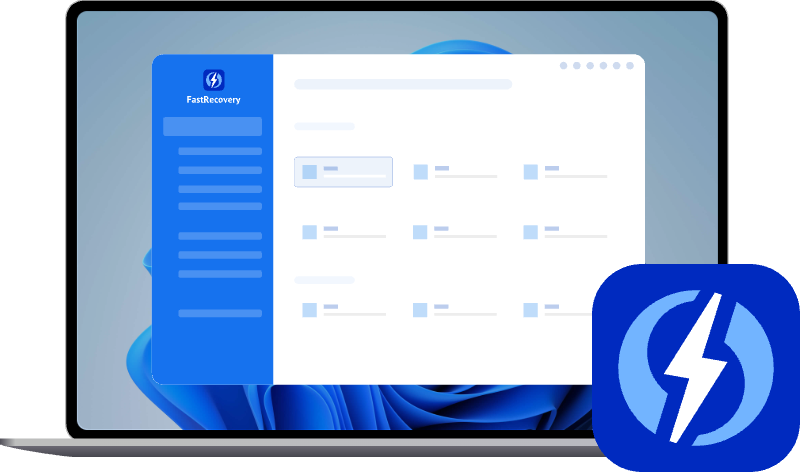5 Free Ways to Recover Deleted Files from Hard Drive
Accidentally deleted files from a hard drive? Don't worry, and this article will introduce 5 free & effective methods to recover deleted files from hard drive on Windows.
The hard drive is known as a hard disk drive (HDD), hard disk, or fixed disk. HDD has dominated the secondary storage device for general-purpose computers since the 1960s. Therefore, many users are accustomed to saving their documents, photos, videos, and other essential data on hard drives.
However, it is unavoidable to suffer data loss while using computers. At the moment, you may wonder: Can I recover deleted files from hard drive? How to recover deleted files in Windows 7, 8, 10, 11? Please continue to read this article and get the answer.
Help! Can I Recover Deleted Data from Hard Drive?
"Hello! I deleted some files and emptied my recycle bin. Today, I want to get them back. Could you give me some suggestions to recover deleted files from hard drives? Or is there any open-source or professional software that can solve this issue? Thanks." - A user from Spiceworks
“Oh no, I deleted the important files.” This is probably the first thought of many users. You may feel panicked and overwhelmed. But data loss is a very common scenario on a PC, and you can recover deleted files from hard drive, even the emptied Recycle Bin folder.
The method of recovering files may also differ due to different deletion methods:
- If you use the Delete button, try to recover deleted files from Recycle Bin. This is because all deleted files will be moved to the Recycle Bin folder first.
- If you use “Shift + Delete” or other methods to permanently delete files from hard drive, you can choose to try reliable data recovery software, or restore from the previous version or backup image.
Besides, this article also includes methods to recover files from a damaged hard drive. If you have problems recovering deleted files, please read this article for recovery methods.
How to Recover Deleted Files from Hard Drive for Free
In the following, you will learn 5 effective and safe methods to recover deleted files from hard drives in Windows 7, 8, 10, 11, etc. Some methods are also applied to recover deleted files in Windows Server 2016, 2019, 2022, and previous systems.
- #1. Windows File Recovery
- #2. AOMEI FastRecovery
- #3. Recycle Bin
- #4. Previous Version
- #5. Backup Image - Backup and Restore (Windows 7) & File History.
Warning: Please stop using this drive or add new data to it, which may overwrite the “free” space occupied by deleted files. Meanwhile, don’t use much of your PC. These will result in data recovery failure.
▶ Way 1. Recover Deleted Files with Windows File Recovery (Microsoft's Official Tool)
Download the Windows File Recovery from the Microsoft Store first, and run it. Then, type the right commands to recover the deleted files you want. If there is a problem with it, please refer to how to use Windows File Recovery.
Step 1. Get Windows File Recovery.
Search Windows File Recovery from the Microsoft Store and click the Get button to download and install it.
Step 2. Type the right commands to scan.
Enter Windows File Recovery in the search box, and click Run as administrator. Select a suitable mode and switches based on file system and filter scan range.
- For recovery mode: If you deleted your files recently, select the Regular mode directly. Besides, select the Extensive mode.
- For switches:
|
Switches |
Meaning |
Supported mode(s) |
|
/n |
Filter the scan range: scans for a specific file with its file name/path/type, etc. |
All |
|
/y: |
Recover specific extension groups. |
Signature |
|
/k |
Recover system files. |
NTFS Segment |
|
/u |
Recovers undeleted files, for example, from the Recycle Bin. |
NTFS Segment |
- Give an Example:
To recover files from the C drive to the E drive, type as follows: winfr C: E: /n \Users\username\Documents\.
Step 3. Waiting for recovery to end.
Press“y” to continue. The recovery time and speed depend on your source disk size.
- ★Tips:
- The source and destination drives must be different. That suggests your recovered files need to be saved in a new location from the scanning drive.
- If you want to stop the recovery process, press Ctrl + C.
- You can try Windows File Recovery, but it may not retrieve your deleted files every time. And you may encounter errors during the file recovery process, such as, “Winfr.exe is not recognized as an internal or external command”, “WinFR requires admin privileges to run”, etc.
▶ Way 2. Recover Deleted Files from Hard Drive with AOMEI FastRecovery (Powerful & Fast)
AOMEI FastRecovery is a professional yet user-friendly data recovery software for Windows 7, 8, 10, 11, etc, and Windows Server that can recover deleted files from internal or external drives (e.g., recover deleted files from SSD), USB drive, SD card, etc. Even novices can operate it in simple steps. Besides, you can benefit from its excellent file recovery capacity and fast speed.

- Free - It has a free edition that can recover data of over 500 MB.
- Fast scanning - Quick scan takes only 3-5 seconds and is best for deleted files, while Deep Scan takes longer and is best for complex scenarios.
- 1000+ file types - Recover deleted Word documents, PPT, Excel, photos, videos, audios, Emails, webpages, compressed files, and more.
- Flexible and easy searching - Search or filter files or folders to find the desired data quickly, especially useful for recovering specific files or folders. File preview is also included.
- All-inclusive - Recover deleted files before or after emptying the Recycle Bin, in case of formatted drive, virus infections, system crashes, etc.
- Safe and reliable to use - It’s read-only and does not cause data overwriting.
Free download and install AOMEI FastRecovery to get started quickly. You shouldn't save it to a partition containing deleted files, as this may cause data overwriting.
Step 1. Launch AOMEI FastRecovery after installing. It will automatically scan all the disks on your computer. Hover the mouse over the hard drive, including the accidentally deleted files, and click Scan.
Step 2. The Quick Scan will automatically scan deleted and other lost files on the selected hard drive. The process is very fast and takes only 3-5 seconds.
Step 3. In this software, you can choose to search for the file/folder name or extension (e.g., docx for Word files) to find files quickly. Or use the Filter feature to search specific types. Here are 2 options in the following:
- Type: It will contain all the file types in the local drive, such as images, videos, documents, emails, web pages, compressed files, etc.
- Size: It allows you to filter file size from less than 128KB to 128KB ~1MB to 1MB ~ 512MB and above, or custom.
After finding the desired data, preview and select it to recover by clicking the Recover button. Please select a new location to store these files, as restoring to the original location may overwrite the space occupied by deleted data, resulting in data recovery failure.
- ★Tips:
- If you can't find the desired data, click the Deep Scan button to scan your disk more thoroughly.
- Except for hard drives, it still allows you to recover files from external hard drives, USB drives, SD cards, digital cameras, etc.
Download AOMEI FastRecovery to recover deleted files now!
▶ Way 3. Recover Deleted Files from Recycle Bin (for Recently Deleted)
If you use the “Delete” button to delete files on a hard drive, the first thing is to check the Recycle Bin. If you empty it and want to recover deleted files, try the other methods in the following.
Step 1. Double-click Recycle Bin icon to open it.
Step 2. Locate the deleted files in the Recycle Bin. Then, right-click these files and click Restore to restore deleted files to their original location.
Or navigate to the Manage tab and click Restore the selected items.
▶ Way 4. Recover Deleted Files from Previous Version (Require Backup First)
If you enable the system restore point or File History feature, you can recover deleted files from the previous version. It works even after you empty the Recycle Bin folder.
Step 1. Start Windows Explorer. Locate the folder containing the deleted file, right-click it, and then select Properties > Previous Version.
Step 2. Select the folder version based on the date modified and click Restore to restore deleted files from hard drive.
▶ Way 5. Recover Deleted Files from Backup Image (Require Backup First)
If you create backup images with Windows backup software like Backup and Restore or File History, you can directly restore deleted files from backup.
From Backup and Restore:
Step 1. Navigate to Control Panel > System and Security and select Backup and Restore (Windows 7). Then, click Restore my files.
Step 2. In the Restore Files window, you can search or browse for files and folders to locate files you want to recover.
- Search: type part of the name of files and select the deleted files to restore.
- Browse for files: navigate to the folder containing deleted files from Recycle Bin and select it. Then, click Add Files.
- Browse for folders: select the entire folder with deleted files.
Step 3. Select a new location to restore deleted files from Recycle Bin. Then, click Start Restore.
From File History:
Step 1. Navigate to Control Panel > System and Security> File History and select Restore your files with File History.
Step 2. Click the left or right arrow to find out the backup version you want to restore and click the green button to restore them to their original location.
Tip: To restore deleted files to a new location, click the Setting icon at the upper right corner and select the Restore to option. Then, you can specify a location you want.
How to Recover Deleted Files from Damaged Disk
If you are experiencing system crashes, blue screen of death, boot failure, etc, or receive error messages indicating your hard drive is damaged like "your hard drive needs to be formatted before using it, your hard drive may be damaged or failing. You need to recover deleted files immediately after you realize it.
🏆 If your computer is still bootable and you can access your data, try to copy it to an external hard drive. Or create a copy of your disk first and recover data from it.
❌ If you can’t boot your PC or the drive is not accessible, remove the drive and install it on another PC. Then, get your data off the drive. If it’s a laptop or you cannot access your data, connect it using an external hard disk enclosure. For disk installation, please refer to replacing the laptop HDD with SSD.
⚡If you still cannot access your data, please take it to a professional hard drive data recovery service. They usually have comprehensive tools and rich experience to recover as much of your data as possible from the failed disk.
More FAQs about Hard Disk Data Recovery
✍ Is it true that deleted files can not be recovered?
In fact, deleted files are not always recoverable. It depends on whether the space occupied by deleted files is overwritten. Any new data will destroy previous data completely.
✍ Are permanently deleted files gone forever?
The permanently deleted files are removed from the file system table instead of being erased. So it still exists on the hard disk.
✍ How to recover deleted files from hard drive without software
If you don’t want to use any data recovery software, try to restore from a file history backup or Backup and Restore. The premise is that you have an available copy of your files.
✍ How to recover permanently deleted files from hard drive
If you create a copy of your files, you can restore from backup image. If not, try reliable data recovery software or service.
✍ How to recover deleted files from hard drive on Mac?
Like Windows systems, Mac also offers users a built-in backup software - Time Machine to create a copy of their files and allow you to put them back.
In Conclusion
You can easily recover deleted files from hard drives in Windows 7, 8, 10, 11, and Windows Server. Among them, the best hard drive data recovery software, AOMEI FastRecovery is the most effective method. It can directly recover your files, up to 1000 file types, and has a high success rate.
It would be a devastating experience for some individuals to recover data from the hard drive. At the moment, it’s necessary to make easy-to-use backups for Windows. A highly praised backup software, AOMEI Backupper Standard can assist you with making automatic, full, incremental, and differential backups within clicks.

